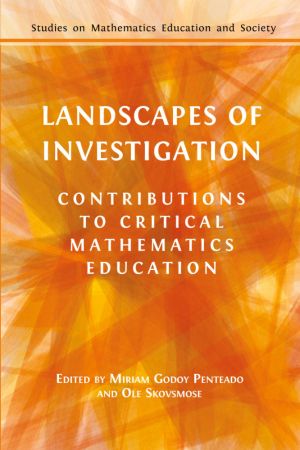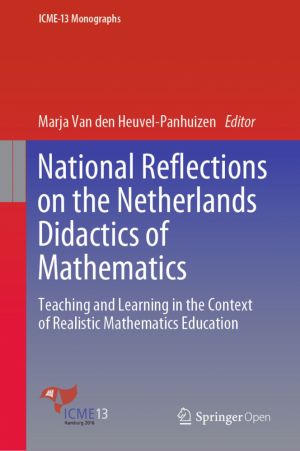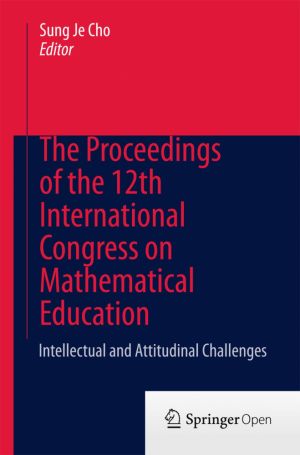Motivational Profiles in TIMSS Mathematics
Exploring Student Clusters Across Countries and Time
by Michalis Michaelides, Gavin T. Brown, Hanna Eklöf, Elena Papanastasiou
DescriptionDetailsHashtagsReport an issue
Exploiting the richness of IEA's TIMSS data from many countries, extracted clusters reveal consistent, as well as certain nuanced patterns that are systematically linked to sociodemographic and achievement measures. Student clusters with inconsistent motivational profiles were found in all countries; mathematics self-confidence then emerged as the variable more closely associated with average achievement. The findings demonstrate that teachers, researchers, and policymakers need to take into account differential student profiles, prioritizing techniques that target skill and competence in mathematics, in educational efforts to develop student motivation. 






Book Description
This book presents a person-centered exploration of student profiles, using variables related to motivation to do school mathematics derived from the IEA's Trends in International Mathematics and Science Study (TIMSS) data. Statistical cluster analysis is used to identify groups of students with similar motivational profiles, across grades and over time, for multiple participating countries.While motivational variables systematically relate to school outcomes, linear relationships can obscure the diverse makeup of student subgroups, each with varying combinations of motivation, emotions, and attitudes. In this book, a person-centered analysis of distinct and meaningful motivational profiles and their differences on sociodemographic variables and mathematics performance broadens understanding about the role that motivation characteristics play in learning and achievement in mathematics.Exploiting the richness of IEA's TIMSS data from many countries, extracted clusters reveal consistent, as well as certain nuanced patterns that are systematically linked to sociodemographic and achievement measures. Student clusters with inconsistent motivational profiles were found in all countries; mathematics self-confidence then emerged as the variable more closely associated with average achievement. The findings demonstrate that teachers, researchers, and policymakers need to take into account differential student profiles, prioritizing techniques that target skill and competence in mathematics, in educational efforts to develop student motivation.
This open book is licensed under a Creative Commons License (CC BY-NC). You can download Motivational Profiles in TIMSS Mathematics ebook for free in PDF format (3.4 MB).
Book Details
Title
Motivational Profiles in TIMSS Mathematics
Subject
Science and Mathematics
Publisher
Springer
Published
2019
Pages
149
Edition
1
Language
English
ISBN13
9783030261825
ISBN10
3030261824
ISBN13 Digital
9783030261832
ISBN10 Digital
3030261832
PDF Size
3.4 MB
License

Related Books

Creating landscapes of investigation is a primary concern of critical mathematics education. It enables us to organise educational processes so that students and teachers are able to get involved in explorations guided by dialogical interactions. It attempts to address explicit or implicit forms of social injustice by means of mathematics, and also...

This book contains 157 problems in classical electromagnetism, most of them new and original compared to those found in other textbooks. Each problem is presented with a title in order to highlight its inspiration in different areas of physics or technology, so that the book is also a survey of historical discoveries and applications of classical e...

This volume offers insights from modeling relations between teacher quality, instructional quality and student outcomes in mathematics across countries. The relations explored take the educational context, such as school climate, into account. The International Association for the Evaluation of Educational Achievement's Trends in Mathematics a...

This open access book, inspired by the ICME 13 Thematic Afternoon on "European Didactic Traditions", consists of 17 chapters, in which educators from the Netherlands reflect on the teaching and learning of mathematics in their country and the role of the Dutch domain-specific instruction theory of Realistic Mathematics Education.Written b...

This book comprises the Proceedings of the 12th International Congress on Mathematical Education (ICME-12), which was held at COEX in Seoul, Korea, from July 8th to 15th, 2012. ICME-12 brought together 4700 experts from 100 countries, working to understand all of the intellectual and attitudinal challenges in the subject of mathematics education as...

This ICME-13 Topical Survey reviews the state-of-the-art by first exploring the roots and scope of design science. Second, it presents two examples of current design science projects that focus on substantial learning environments including a student and a teacher perspective. Subsequently, the book elaborates on how empirical research can be conce...

